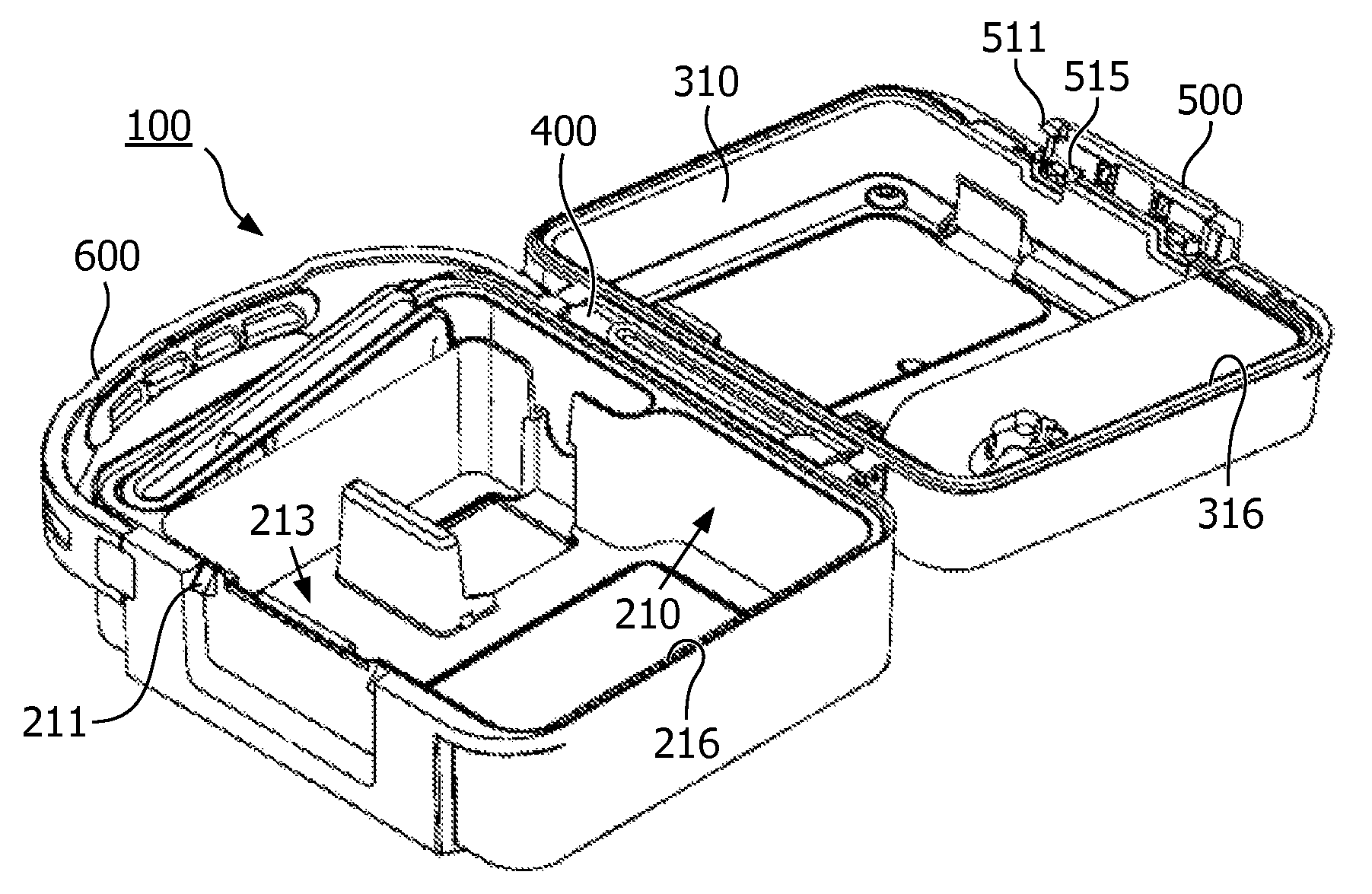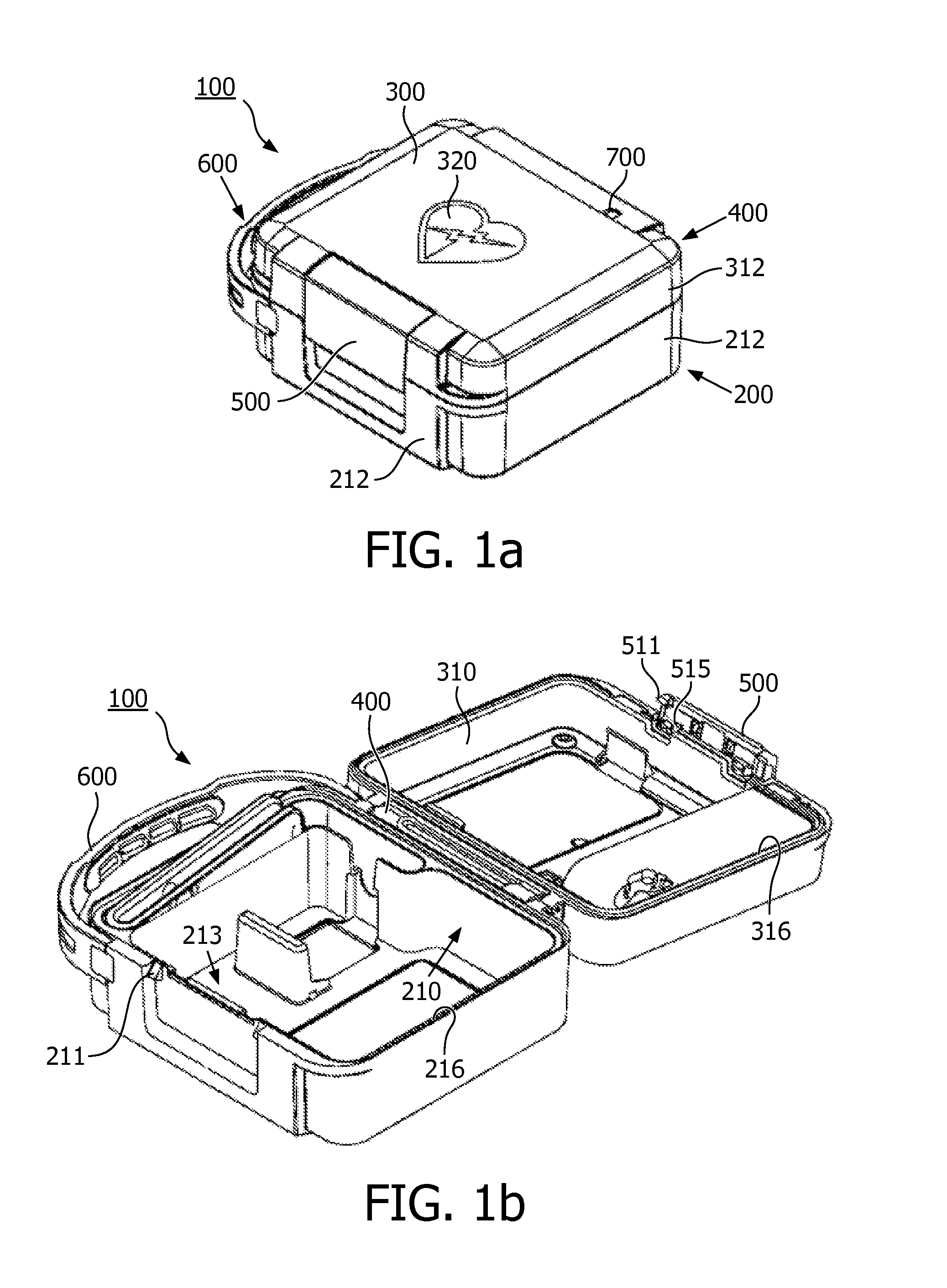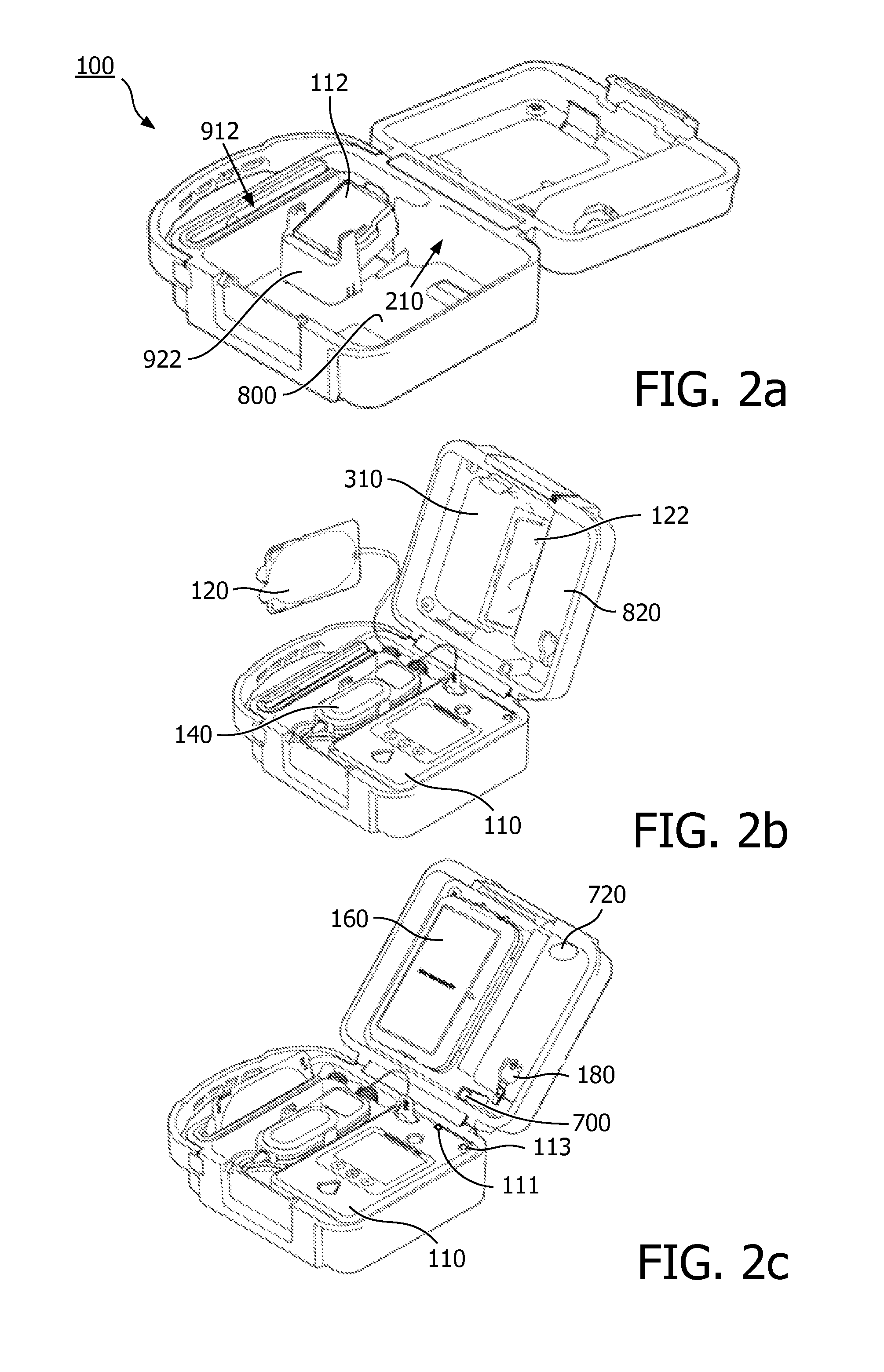Carrying case handle for defibrillator and accessories
a defibrillator and carrying case technology, applied in the field of carrying cases for defibrillators, can solve the problems of life-threatening cardiac arrest, difficult rapid use, and patient's heart failing to provide blood flow to support life, and achieve the effect of more rapid deployment and us
- Summary
- Abstract
- Description
- Claims
- Application Information
AI Technical Summary
Benefits of technology
Problems solved by technology
Method used
Image
Examples
Embodiment Construction
[0029]Referring first to FIG. 1a, a defibrillator carrying case 100 according to the principles of the present invention is shown in the closed position. The carrying case 100 is sized to contain and protect components needed for a cardiac arrest rescue, such as an AED with pre-connected electrodes, a CPR meter, a fast response kit, and associated spares, not shown. The carrying case 100 protective surfaces consist primarily of two case halves; a base 200 and a lid 300. Base 200 and lid 300 are fabricated of a lightweight and substantially rigid structural material, such as plastic, metal or a composite material. The material resists puncture, abrasion, water ingress and shock to protect the interior contents. In a preferred embodiment, base 200 and lid 300 are constructed of molded structural foam polypropylene or like material. Base 200 comprises four base walls 212 and a base bottom 214, together forming a base interior region 210. Similarly, lid 300 comprises four lid walls 312 ...
PUM
 Login to View More
Login to View More Abstract
Description
Claims
Application Information
 Login to View More
Login to View More - R&D
- Intellectual Property
- Life Sciences
- Materials
- Tech Scout
- Unparalleled Data Quality
- Higher Quality Content
- 60% Fewer Hallucinations
Browse by: Latest US Patents, China's latest patents, Technical Efficacy Thesaurus, Application Domain, Technology Topic, Popular Technical Reports.
© 2025 PatSnap. All rights reserved.Legal|Privacy policy|Modern Slavery Act Transparency Statement|Sitemap|About US| Contact US: help@patsnap.com



